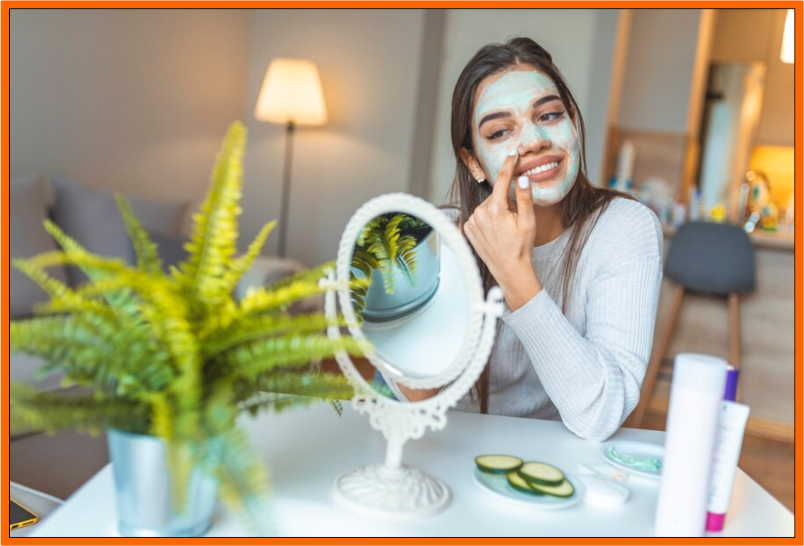In a world where consumers are becoming increasingly conscious of what they put on their skin, clean beauty has emerged as a powerful trend. People are seeking natural and organic alternatives to traditional beauty products, and this shift is transforming the beauty industry. In this article, we will explore the rise of clean beauty, its principles, benefits, and how to incorporate it into your skincare and beauty routine.
Table of Contents
- Introduction
- What is Clean Beauty?
- The Principles of Clean Beauty
- Benefits of Clean Beauty
- Ingredients to Avoid
- How to Identify Clean Beauty Products
- Incorporating Clean Beauty Into Your Routine
- DIY Clean Beauty Recipes
- Clean Beauty Makeup
- Clean Beauty for Haircare
- Clean Beauty Brands to Explore
- Clean Beauty and Sustainability
- The Future of Clean Beauty
- Conclusion
- Frequently Asked Questions (FAQs)
Introduction
The beauty industry is undergoing a significant transformation, with consumers becoming more discerning about the products they use. Clean beauty, often referred to as natural or organic beauty, has gained immense popularity. It’s not just a trend but a lifestyle choice for those who value their skin’s health and the environment.
What is Clean Beauty?
Clean beauty refers to skincare and beauty products that are formulated with natural, non-toxic, and environmentally friendly ingredients. These products are free from harmful chemicals like parabens, sulfates, synthetic fragrances, and phthalates, which are commonly found in traditional beauty items.
The Principles of Clean Beauty
Clean beauty follows a set of principles that guide the formulation of products:
1. Transparency
Clean beauty brands are transparent about their ingredients, sourcing, and production processes. They provide detailed information about what goes into their products.
2. Natural and Organic Ingredients
Clean beauty products use natural and organic ingredients that are gentle on the skin and have minimal environmental impact.
3. Safety
Safety is paramount in clean beauty. Products undergo rigorous testing to ensure they are free from harmful substances and safe for all skin types.
Benefits of Clean Beauty
Clean beauty offers numerous benefits:
- Skin Health: Clean products are less likely to cause skin irritations and allergies.
- Environmental Impact: Using sustainable ingredients and eco-friendly packaging reduces the carbon footprint.
- Cruelty-Free: Many clean beauty brands are cruelty-free, ensuring no animal testing.
- Long-Term Benefits: Natural ingredients can provide long-term benefits, unlike some synthetic alternatives.
Ingredients to Avoid
When exploring clean beauty products, be cautious of the following ingredients:
- Parabens
- Sulfates
- Synthetic Fragrances
- Phthalates
- Mineral Oils
How to Identify Clean Beauty Products
Look for labels or certifications like “Certified Organic,” “Cruelty-Free,” or “Clean Beauty” to ensure the product aligns with clean beauty principles.
Incorporating Clean Beauty Into Your Routine
Transitioning to clean beauty can be gradual. Start by replacing one product at a time, such as your moisturizer or cleanser. This way, you can gradually build a clean beauty routine that suits your needs.
DIY Clean Beauty Recipes
Creating your own clean beauty products at home can be fun and cost-effective. There are plenty of DIY recipes for masks, scrubs, and more using natural ingredients.
Clean Beauty Makeup
Clean beauty extends to makeup products as well. Look for brands that offer clean makeup options, from foundation to lipstick.
Clean Beauty for Haircare
Your hair deserves the same clean treatment as your skin. Explore clean haircare products that promote healthy locks without the use of harsh chemicals.
Clean Beauty Brands to Explore
There is a growing number of clean beauty brands in the market. Some popular ones include Drunk Elephant, RMS Beauty, and Tata Harper.
Clean Beauty and Sustainability
Clean beauty goes hand in hand with sustainability. The use of eco-friendly packaging and responsible sourcing of ingredients contributes to a more sustainable beauty industry.
The Future of Clean Beauty
As consumer awareness continues to grow, clean beauty is poised to become the new norm in the beauty industry. More innovative products and sustainable practices are on the horizon.
Conclusion
The rise of clean beauty signifies a shift towards healthier, more sustainable skincare and beauty practices. By embracing clean beauty, you not only protect your skin but also contribute to a cleaner and greener planet.
Frequently Asked Questions (FAQs)
1. Are clean beauty products suitable for all skin types?
Yes, clean beauty products are formulated to be gentle and suitable for all skin types, including sensitive skin.
2. Is clean beauty more expensive than traditional beauty products?
Clean beauty products can be slightly more expensive due to the quality of ingredients and sustainable practices. However, the long-term benefits often outweigh the cost.
3. Are clean beauty products as effective as traditional ones?
Clean beauty products can be just as effective, if not more so, as they focus on nourishing the skin with natural ingredients.
4. What should I look for when shopping for clean beauty products?
Look for certifications, read ingredient lists, and consider the brand’s commitment to transparency and sustainability.
5. Can I make my entire beauty routine clean?
Yes, you can transition to a completely clean beauty routine over time by gradually replacing your current products with clean alternatives.
In conclusion, clean beauty is not just a trend but a conscious choice that benefits both your skin and the environment. By making informed choices and gradually incorporating clean beauty products into your routine, you can enjoy the many advantages it offers while contributing to a cleaner and greener world.













